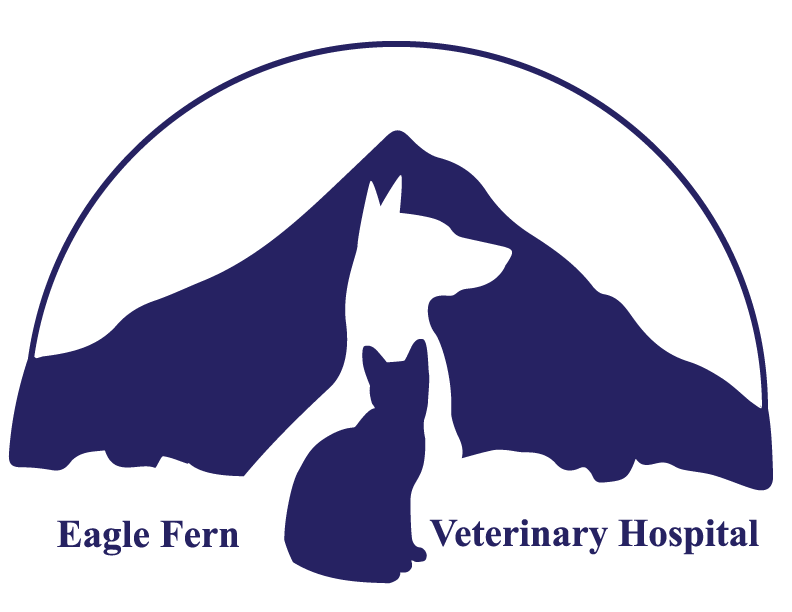|
 Food Allergy Food Allergy
Food allergy is a common skin disorder in dogs and cats that is caused by an allergic reaction to food. The animal usually reacts to a protein source (beef, chicken, lamb, cow's milk) but it may be a minor component (preservative, additive, dye). Because this is an acquired disease, the animal has often been fed the food for months to years before signs are seen.
The most common signs of food allergy are an intense, non-seasonal itch, foot licking and inflammation. In dogs, the itch tends to be generalized, but the ears, face, and feet may be more severely affected. Some dogs may show sign of recurrent ear infections as the only manifestation of food allergy. Food allergy in cats usually affects the face and neck, and itch may be so severe that the animal scratches itself until it bleeds. Some animals with food allergies will also have vomiting and diarrhea. In both dogs and cats, the disease may be poorly responsive to steroid therapy. Clinical signs usually start before the age of 3 years, but may occur at any age.
In addition to being allergic to food the animal may also be allergic to fleas and environmental factors (e.g. pollen, mold, house dust mites). Flea allergies are ruled out with application of Advantage or Frontline every 2-4 weeks. If there is a poor response to the food trial as allergy medications are withdrawn, atopy (environmental allergies) may be the primary cause of the skin disorder. This will necessitate allergen avoidance and medications to control the allergy.
The diagnosis of food allergy involves a food elimination trial. Simply changing the brand of pet food is not the same as an elimination diet because most foods share similar protein, grain meal, preservatives, and dyes. Because food allergy develops after being fed a certain food component, only foods that the animal has never eaten before may be used. One protein source and one carbohydrate source are chosen and all other foods and treats are discontinued. Cats may eat a single protein source for the trial. Animals may react to allergens in their food for up to 6 weeks or more; therefore a restrictive diet must be given for up to 10 weeks if only skin is involved and 3-4 months if the ears are also involved.
The ideal elimination diet is homemade. Choose a protein (e.g. pinto beans, fish, pork, tofu, lamb, rabbit, venison, duck) and a carbohydrate source (e.g. canned pumpkin, potato, rice, oatmeal) in a ratio of 1 pound cooked protein to six cups carbohydrate or 1 can each of pinto beans and canned pumpkin. Flavorings other than salt, pepper, and garlic may not be used (no oils, cooking spray, butter). The diet can be prepared in bulk and frozen into daily rations. Feed one cup per 10 pounds body weight daily. Commercial prescription hypoallergenic diets are available if you are unable to cook for your pet. Switch gradually over to the new diet over a week's time. Watch for vomiting, diarrhea or refusal to eat the new diet when starting the trial. It is important that cats eat. Cats can develop a serious liver disease if they do not eat for 2 days. Keep a daily diary during the trial to monitor progress. Record the level of itchy behavior on a scale of 1-10 on a calendar.
During a food elimination trial, it is important that only that diet is fed. Treats, rawhide chews, dog biscuits, pig ears, chew hooves, vitamin pills, food supplements, glucosamine/chondrotin products and flavored chewable heartworm preventives should not be given. Unflavored heartworm preventive tablets should be given during the trial. Do not use cheese, hot dogs, or other treats to give medication during the diet trial. Restrict access to cat litter boxes. Any treats must consist of the same ingredients used in the diet trial. Outdoor pets may need to be confined indoors and pets monitored when outside to keep it away from other food sources. Keep the pet away from other pet's food or licking their food bowls. Let everyone in the household know that the pet is on a special diet. One morsel of another type of food has the potential to invalidate the entire elimination diet trial and could necessitate the need for a different diet for another 10-16 week period.
The homemade elimination diet is not a balanced diet and it is not recommended that pets continue to eat the diet longer than 16 weeks without veterinary supervision. It is not necessary for your pet to exhibit 100% improvement while on the diet. 50% improvement may be sufficient to demonstrate response to the diet trial. Up to 15% of food allergic pets may not respond to a dietary trial and up to 30% may exhibit multiple allergies; therefore have only a partial response.
The confirmation of a food allergy is determined by a re-challenge to the original diet. The original diet should be slowly reintroduced over 3-5 days and the pet monitored for increase in itching, which should return within 14 days. If the itching returns, stop feeding the original diet and revert back to feeding the elimination trial diet until your pet returns to normal. If the pet is food allergic your veterinarian will work closely to find a commercially prepared diet that contains ingredients to which your pet is not allergic. In rare instances, pets may react to all commercial diets and must receive a homemade diet. Consultation with a veterinary nutritional specialist can provide a recipe for a balanced hypoallergenic diet for your pet.
| 
